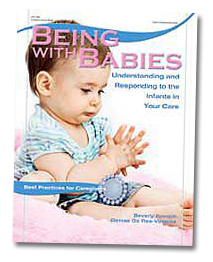ExchangeEveryDay Past Issues
 << Previous Issue
| View Past Issues | | Next Issue >>
<< Previous Issue
| View Past Issues | | Next Issue >> -Agatha Christie
This is the conclusion of a report of the Harvard Center on the Developing Child, "The Timing and Quality of Early Experiences Combine to Shape Brain Architecture." The report explains...
"Beginning at birth, all children have the capacity to learn any of the world's languages." This ability is encoded in our genes and activated by exposure to everyday conversation in an interactive way. Unless a child has a specific disability, the achievement of fluency in any language, as well as the mastery of more than one language at the same time, does not require formal instruction or intervention in the early childhood years. It simply requires ongoing communication with others. Moreover, the younger the brain, the greater its capacity to master more than a single language. If education policies were guided by what we know about the development of the brain, second-language learning would be a preschool priority."
 Being with Babies: Understanding and Responding to the Infants in Your Care is a great resource for both beginning and experienced caregivers. Each chapter describes an issue that caregivers face daily, offers scenarios that illustrate the challenge, suggests solutions caregivers can use to address the issue, and concludes with a review of key points. Being with Babies teaches caregivers how to handle everyday challenges while learning about developmental stages. This hands-on resource is perfect for caregivers of children 6 weeks to 18 months old, as well as for staff development and resource libraries. Chapters include information on:
Being with Babies: Understanding and Responding to the Infants in Your Care is a great resource for both beginning and experienced caregivers. Each chapter describes an issue that caregivers face daily, offers scenarios that illustrate the challenge, suggests solutions caregivers can use to address the issue, and concludes with a review of key points. Being with Babies teaches caregivers how to handle everyday challenges while learning about developmental stages. This hands-on resource is perfect for caregivers of children 6 weeks to 18 months old, as well as for staff development and resource libraries. Chapters include information on:
- Developing relationships with babies
- Using observation to understand babies
- Communicating with babies
- Selecting appropriate toys
- Setting up safe and effective learning environments for babies
ExchangeEveryDay
Delivered five days a week containing news, success stories, solutions, trend reports, and much more.
What is ExchangeEveryDay?
ExchangeEveryDay is the official electronic newsletter for Exchange Press. It is delivered five days a week containing news stories, success stories, solutions, trend reports, and much more.
Only $6.00 per order and 50% profit on every sale. Your bank account will start Greening up!
1. Effective Practices in Early Childhood Education
Dr. Sue Bredekamp
2. For Administrators: Plan for Technology Integration
Fran Simon & Karen Nemeth




Comments (2)
Displaying All 2 CommentsNat's Day Care
Philadelphia, PA, United States
I find that this is so true. I have two children in my child care; one parent is from Germany and one is from Italy. The parents only speak their language to their children and it is wonderful to see how the children can go from English to their language with out any problems.
CSBC
Denver, United States
I have been saying this for years! Further, if we really want to be globally competitive, we will teach a second language (parents' choice) beginning in preschool)
Post a Comment